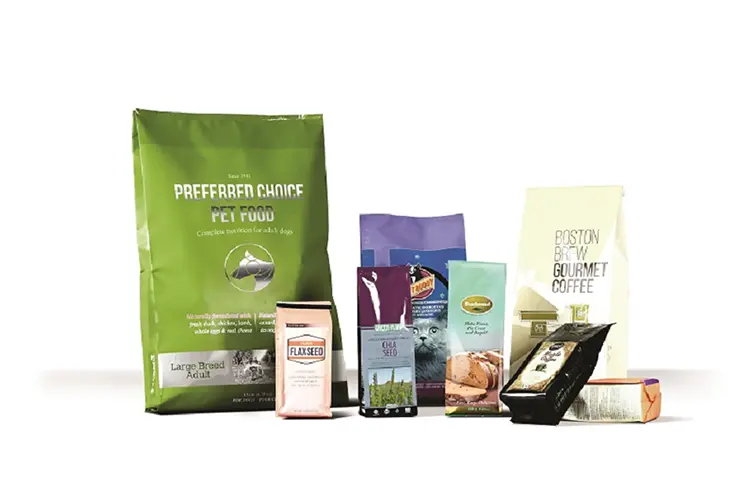Flexible Packaging: Meeting the Changing Needs of Consumers and Industries
Flexible packaging has become a crucial factor that cannot be ignored. Packaging is essential in protecting and preserving products while also communicating about the brand identity. However, the traditional rigid packaging that has been dominant for a long time is increasingly being replaced by flexible packaging. Flexible packing provides an alternative that offers numerous advantages over traditional rigid packaging. Flexibility in packaging can be defined as the ability of the packaging to adapt to different sizes and shapes, while also being able to provide protection and preservation of the product.
This article looks at the concept of flexibility in packaging, its types, advantages, key considerations when choosing flexible packaging, challenges, and the future of flexible packing in the industry.

Types of flexible packaging
Flexible packaging comes in various forms, depending on the requirements of the contents being packaged. Some of the common types of flexible packing include bags, pouches, stand-up pouches, films, and labels.
Bags are one of the most common forms of flexible packaging. They come in different sizes, from very small sizes to large bags, depending on the product being packaged. They may be made using different materials such as paper, plastic, or a combination of both.
Pouches are another common form of flexible packing. They are similar to bags but come with an opening that can be used to dispense the contents. Pouches are often used for packaging products such as food, cosmetics, and detergents.
Stand-up pouches are a more recent innovation in flexible packaging. They are designed to stand upright, making them suitable for products such as snacks, pet food, and beverages.
Films are used in flexible packing to provide a layer of protection to the product. They may be made using different materials, depending on the product being packaged. For example, films made from polyethylene are commonly used to package fresh produce.
Labels are another form of flexible packing that is used to provide information about the product. They may be attached to different types of packaging, including bags and pouches.
Advantages of flexible packaging
Flexible packaging offers several advantages over traditional rigid packaging. These include:
Cost-effective: Flexible packaging is typically less expensive than rigid packaging. It is also lighter, which reduces transportation costs.
Light-weight: Flexible packing is lighter than rigid packaging. This makes it easier to transport and reduces transportation costs.
Customizable: Flexible packaging can be customized to meet specific product requirements. This includes the size, shape, and design of the packaging.
Enhances shelf-life: Flexible packing provides an airtight seal that helps to preserve the contents of the packaging. This means that products packaged in flexible packaging have a longer shelf-life.
Eco-friendly: Flexible packaging is typically made using fewer resources than rigid packaging. It is also more easily recyclable, which reduces waste.
Key considerations when choosing flexible packaging
When choosing flexible packaging, there are several key considerations that need to be taken into account. They are as follows:
Barrier properties: The packaging material should provide an adequate barrier against external factors such as moisture, oxygen, and light.
Seal strength: The seal of the packaging should be strong enough to prevent contents from leaking or spilling.
Materials: The material used to make the packaging should be compatible with the contents being packaged.
Aesthetics: The packaging should be visually appealing and able to communicate the brand identity.
Transportation considerations: The packaging should be designed to withstand transportation conditions such as temperature, humidity, and pressure.
Challenges of flexible packaging
While flexible packaging offers several advantages, it also presents some challenges. These include:
Compatibility with contents: The packaging material used should be compatible with the contents being packaged. This is particularly important for products such as pharmaceuticals, where the packaging material can affect the efficacy of the product.
Recycling: Recycling flexible packing can be challenging as it may be made using a combination of materials that are difficult to recycle.
Safety and regulatory compliance: There are concerns about the safety of flexible packing in terms of food contact and packaging materials that are harmful to the environment.
Conclusion
In conclusion, flexible packaging is a versatile and cost-effective solution for modern-day packaging needs. Its lightweight and flexible nature not only reduces the material used but also decreases transportation costs and carbon footprint, making it the go-to option for companies looking for sustainable and eco-friendly packaging alternatives. The advanced technology used in the production of flexible packing ensures safety, convenience and preservation of the product, making it a preferred choice in the food and pharmaceutical industries. As the demand for sustainable and convenient packaging continues to grow, flexible packaging is likely to gain more popularity and acceptance in the near future.
Henan Top Packing Machinery Co., Ltd is a comprehensive packaging solutions provider. We aims to supply flexible, sustainable, and affordable packing machines to worldwide small businessman. If you want to start your packaging project, welcome to contact us for more useful machine details.
